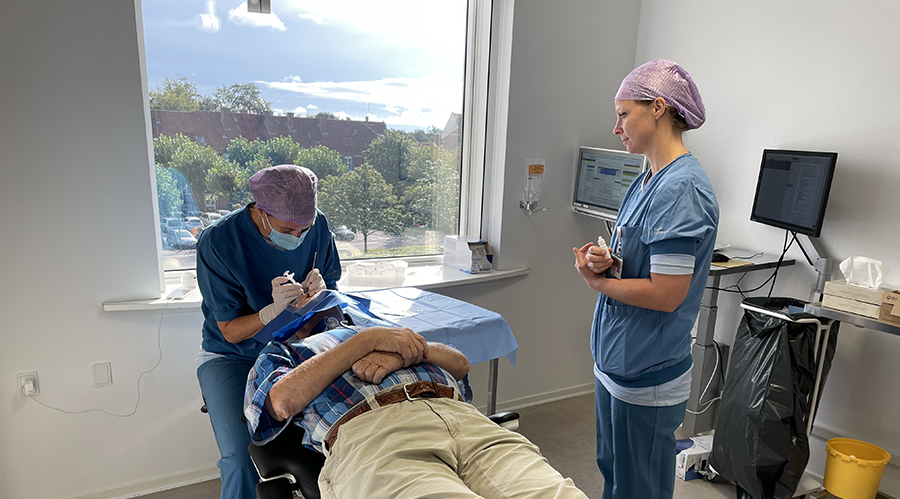
Significant increase in the need for treatment of eye diseases
A greater number of elderly people means more cases of eye diseases requiring treatment. New research from the University of Southern Denmark (SDU) reveals that the need will increase by 50 percent in the coming years.
Since 2007, it has become possible to treat retinal diseases such as wet AMD, eye blood clots, and diabetic retinopathy with medical injections into the eye. Over 56,000 Danes have received the anti-VEGF medication since then to prevent blindness from these diseases.
The researchers behind a new study, published in the journal JAMA Network Open, have found that the number of patients needing treatment over the next five years will increase by 50 percent.
-It's surprising that we are facing such a significant increase in the relatively short term as we are, says Benjamin Sommer Thinggaard, a physician and Ph.D. student at the Institute of Clinical Research, SDU, and Department of Ophthalmology E, Odense University Hospital.
Three of the most prevalent eye diseases
He is the lead author of the study, which is based on data from Danish registries and has projected the increase in the use of anti-VEGF from 2017 to 2022
- We are witnessing a significant increase simply because we are getting older and older," says Benjamin Sommer Thinggaard.
- In recent years, we have observed a consistent number of individuals being newly diagnosed with conditions such as wet AMD and eye blood clots, but patients are staying in treatment for increasingly longer periods. This is the primary reason for the increase.
-And as we look ahead, there will be many more cases of these diseases and hence a greater need for the medication.
Facts
- Since 2007, when anti-VEGF was approved for use in Denmark, over 900,000 injections have been administered to more than 56,000 patients.
- Two out of three have received injections due to wet AMD, 14% due to eye blood clots, and 11% due to diabetic eye disease.
- Each year, approximately 3,500 Danes are diagnosed with treatment-requiring wet AMD, 900 Danes require treatment for eye blood clots, and 700 Danes initiate treatment with eye injections for diabetic eye disease.
- In Denmark, four medications are currently approved for the treatment of the aforementioned diseases, and these treatments are administered at selected hospitals under sterile conditions by specially trained personnel.
Preserving vision for half of the patients
The treatment of wet AMD, eye blood clots, and diabetic retinopathy involves anti-VEGF injections. Patients typically receive these injections at the hospital every 4 to 12 weeks, often for life.
-The medication works very effectively, among other things, by preventing the formation of harmful blood vessels in the retina, and it has halved the number of new cases of blindness in individuals over 50 years of age.
Benjamin Sommer Thinggaard hopes that his research can be used to bring even greater attention to the rapidly growing need for additional treatments that the healthcare system is facing due to the aging population's increasing numbers.
- This is an excellent example of the prioritization challenges we face in the healthcare system, and it is evident to consider whether the treatment of other diseases, both within the field of ophthalmology and in other specialties, is experiencing similar increases.